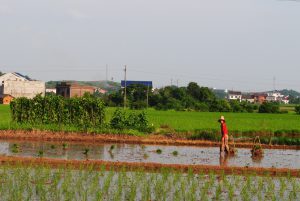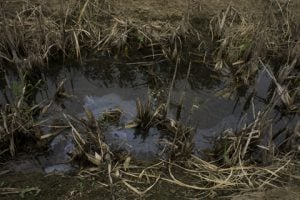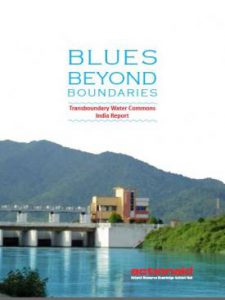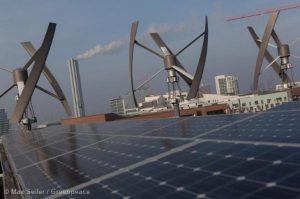China’s plan to clean up soil pollution, which could end up costing 5.7 trillion yuan (US$917 billion) according to one recent estimate, is complicated by a lack of public data on the extent of the problem in many areas of the country, experts have warned.
Soil pollution is arguably China’s biggest environmental problem. Around a fifth of the country’s arable land is estimated to have been seriously damaged by decades of heavy industry and intensive agriculture, posing grave risks for food supply and human health, such as contamination of rice crops by cadmium from lead mining.
According to experts, China’s war on pollution has placed much less attention on soil than air and water, partly because the problem is harder to identify and measure compared with smog or poisoned rivers.
Cleaning up China’s soil faces major obstacles. The problem is much larger compared with what Europe, US and Japan had to deal with in the late 20th century; identifying those companies responsible is much more difficult than in market economies; and incentives are weak in areas where the value of land is low.
In addition, data is lacking on which specific areas are polluted, the particular sources of pollution and how bad contamination actually is, said Ma Jun, a Chinese environmentalist and co-founder of the Institute of Public and Environment Affairs.
The IPE earlier this year launched a ‘Bluesky map’ app that supplies realtime data on air and water pollution, but has no such feature for soil, mainly because of a dearth of public statistics on the scale of the problem.
“Before dealing with the pollution you should disclose the information so the public can exercise oversight,” Ma said, warning that solutions to the problem will be ineffective and inefficient without a clear, localised overview of the problem.
“Soil pollution isn’t like air or water pollution. You can’t see it or feel it. You can spend money to deal with it, but it’s hard to say if that will actually work.”
Experts said a huge clean-up should only really begin once the sources of pollution cease, which it itself a huge task as China continues to build the apparatus needed to enforce new environmental laws and take heavy industry to task.
“Spending will benefit only the companies winning contracts, and this may need to be repeated to clean up further pollution,” Ma said.
A private industry body, the Jiangsu Institute of the Environmental Industry, last year estimated that between 2014 and 2020 the market for China’s soil clean-up could be worth nearly US$110 billon.
Despite the widespread view that China’s soil clean-up may be haphazard, wasteful and even end up being a source of pollution in itself as companies scramble to secure lucrative government contracts, the Ministry of Environmental Protection is readying a major action plan on soil clean-up.
This is a widening of central government’s allocation of (plan to spend) 3.6 billion yuan this year to help clean-up pollution from heavy metals in 30 of the worst affected cities and fund 37 pilot projects to treat and restore polluted soil.
Zhang Yi, head of the Shanghai Environmental Sanitation Design Engineering Institute, has calculated the action plan will require investment of over 5.7 trillion yuan.
But experts are sceptical that the private sector will be able to raise more than a fraction of the financing required, or that the government’s approach is a good way of spending money to solve the problem.
The MEP is considering whether to use the “Superfund” approach that was managed by the US government from the 1980s to clean up the country’s toxic legacy, but these efforts only had mixed success and shouldn’t necessarily be the model used by authorities in China, said Ma and other experts.
US clean-up had mixed results
Through the Superfund, the US Environmental Protection Agency required companies responsible for pollution to either remove or destroy the pollution (such as incinerating heavily-contaminated soil) or use compounds to take ‘remedial’ action and clean up sites poisoned by heavy metals or chemicals.
Treating sites identified in the US became increasingly complicated and costly, while a lack of funding meant that few new sources of contamination were correctly identified.
Chen Nengchang, a researcher at the Guangdong Institute of Eco-Environment and Soil Sciences, said before China embarks on a major programme to clean up soil, it should first get to grips with the pollution problem and identify non-polluted areas before attempting a clean-up.
“It’s easy to damage the soil, but harder to clean it up. We need to get sources of pollution under control first, rather than focus on restoration like the Superfund does.”







